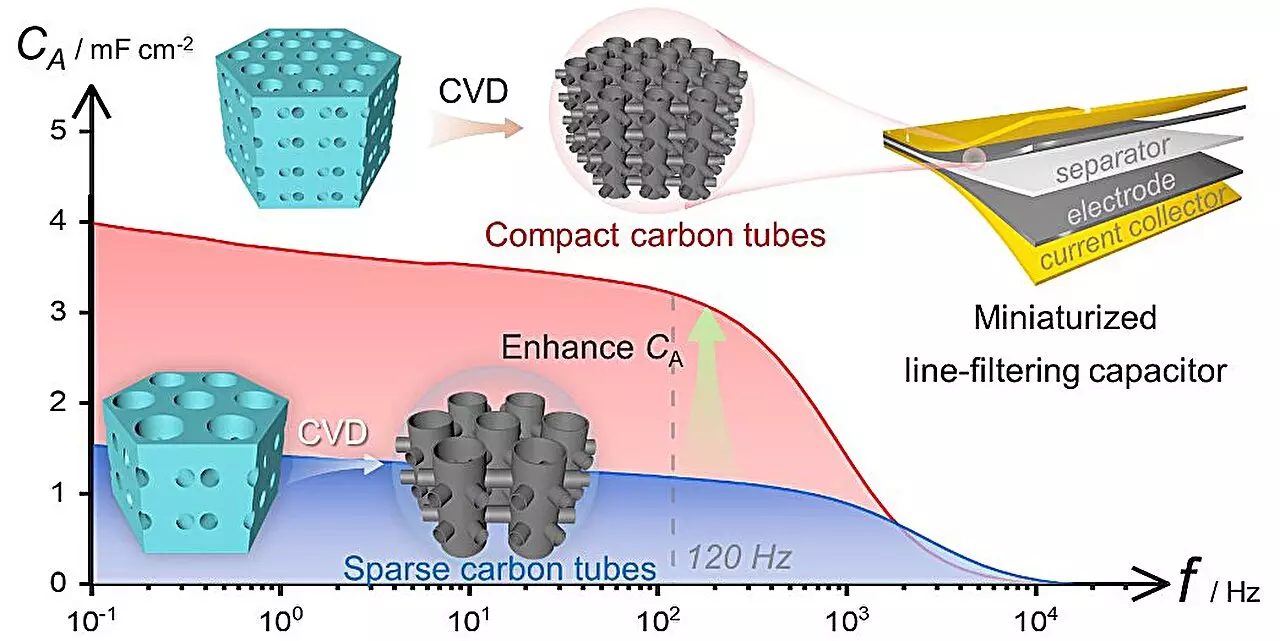In a groundbreaking study published in Nano-Micro Letters, a research team has developed high-density three-dimensional carbon tube nanoarray electrodes for line-filtering capacitors. This innovative approach showcases significant potential for creating high-performance and miniaturized filter devices that can revolutionize modern electronics.
Filter capacitors are essential components that convert fluctuating voltage signals into steady direct current. However, conventional aluminum electrolytic capacitors are large and have limited capacitance, posing challenges in shrinking modern electronics. As an alternative, electric double-layer capacitors (EDLCs) offer higher energy density, making them ideal for smaller filter capacitor applications. Nevertheless, traditional carbon-based EDLCs suffer from slow ion transport, hindering their ability to achieve high energy density and quick frequency response required for line-filtering.
Led by Prof. Meng Guowen, Prof. Han Fangming, Prof. Wei Bingqing, and Prof. Li Xiaoyan, the research team focused on manipulating the pore structure of three-dimensional interconnected porous anodized aluminum oxide (3D-AAO) templates. By precisely adjusting the vertical pore diameter and inter-pore spacing of the templates, they successfully fabricated 3D compactly arranged carbon tube (3D-CACT) nanoarray electrodes using chemical vapor deposition.
Tests showed that reducing the pore diameter and inter-spacing significantly increased the electrode’s surface area, resulting in exceptional frequency response performance. The 3D-CACT electrode-based device exhibited a phase angle of -80.2° at 120 Hz, ultra-low equivalent series resistance, rapid resistance-capacitance time constant, and specific areal capacitance far surpassing that of commercial AECs and previously reported EDLCs.
To demonstrate scalability, the researchers connected multiple sets of 3D-CACT-based EDLCs in series, extending the capacitors’ operating voltage while maintaining rapid frequency response and low loss characteristics. They successfully utilized the series-connected devices as filters, converting various AC inputs into smooth DC signals with performance comparable to commercial AECs.
The development of high-density 3D-CT nanoarray electrodes represents a significant advancement in filter capacitor technology, with the potential to enhance miniaturized power systems and electronics. This innovative approach not only addresses the limitations of traditional capacitors but also opens doors to new possibilities in the field of electrical engineering.


Leave a Reply